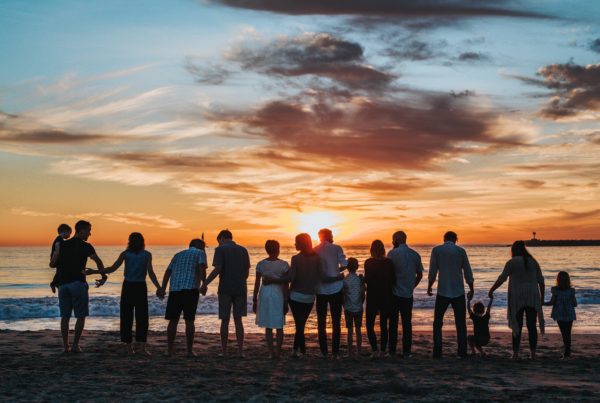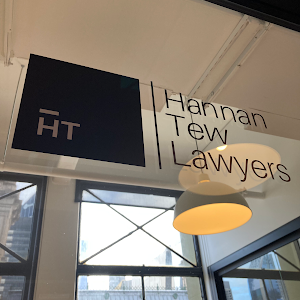The Adoption (Subclass 102) visa provides for the permanent migration of a child who is either adopted or to be adopted.
Read our general information and document checklists in relation to the Adoption visa below. Contact us directly for specific advice.
Overview
Adoption (Subclass 102) visa
In broad terms, the Adoption (Subclass 102) visa (referred to as just the Adoption visa) provides for the permanent migration of a child who is either (a) adopted (or to be adopted), with the involvement of an Australian State/Territory central adoption authority, under the Hague Adoption Convention, a bilateral adoption agreement with a competent authority of another country or another adoption agreement) or (b) adopted by expatriate Australians who have been living outside Australia for more than 12 months before making the Adoption visa application. For other visa options for children, please refer to this page.
Target Market
- in very broad terms only, the Adoption (Subclass 102) visa (or the Adoption visa) provides for the permanent migration of a child who is either:
- adopted under private arrangements by an expatriate Australian/s living outside Australia for more than 12 months at time of application
- adopted (or to be adopted), with the involvement of an Australian State/Territory Central Adoption Authority, under an adoption agreement (other than the Hague Convention or a bilateral adoption arrangement under the Hague Convention)
- adopted (or to be adopted), with the involvement of an Australian State/Territory Central Adoption Authority, under
- the Hague Adoption Convention
- a bilateral adoption agreement with a competent authority of another country or another adoption agreement)
- adopted (or to be adopted), under third country Hague Convention adoptions (when STCA would not be involved in the adoption arrangements)
Visa types
- Adoption (Subclass 102)
- please refer to this page for visa options for children in other circumstances (including Child visas, Dependent Child or Oprhan Relative visas)
Eligibility
Adoption (Subclass 102) visa
There are certain minimum eligibility requirements for the Adoption (Subclass 102) visa (simply referred to as the Adoption visa), particularly in relation to the process of adoption. Given the complexities, it is highly recommended you speak to an immigration expert to review these requirements to ensure eligibility prior to visa lodgement. For further information, feel free to book a consultation with one of our lawyers through here, or contact us for general information.
Sponsor requirements
- be at least 18 and an Australian citizen, eligible New Zealand citizen or holder of an Australian permanent visa or
- be the spouse or de facto partner of the Australian relative, if the spouse or de facto partner has turned 18, is a settled Australian citizen, a settled Australian permanent resident or a settled eligible New Zealand citizen, and cohabits with the relative
Visa requirements
- the child must have been adopted or be in the process of being adopted by an Australian citizen, permanent visa holder or eligible New Zealand citizen through one of the four options:
- adopted under private arrangements by an expatriate Australian/s living outside Australia for more than 12 months at time of application
- adopted (or to be adopted), with the involvement of an Australian State/Territory Central Adoption Authority, under an adoption agreement (other than the Hague Convention or a bilateral adoption arrangement under the Hague Convention)
- adopted (or to be adopted), with the involvement of an Australian State/Territory Central Adoption Authority, under
- the Hague Adoption Convention
- a bilateral adoption agreement with a competent authority of another country or another adoption agreement)
- adopted (or to be adopted), under third country Hague Convention adoptions (when STCA would not be involved in the adoption arrangements)
- the child must be under 18 years of age when the visa application is lodged with the Department and also when the visa application is decided
- the child must be without a spouse or partner
- the child must be a relative of the sponsor
- an Adoption (subclass 102) visa application can only be made outside Australia.
- meet health and character criteria.
Documents
Adoption (Subclass 102) visa
The actual documents you require for an Adoption visa are dependent on the applicant’s particular circumstances including (but not limited to): family members, individual health and character, and identity. Your Hannan Tew advisor will provide you with a link to the Hannan Tew portal which will set out the specific documents required.
Identity
- copy of passport bio data page
- proof of name change (if relevant)
- passport sized photographs
- police clearances from any country you have lived in for 12 months or more in the last 10 years since turning 16
Forms
Relationship to sponsor
- evidence of relationship to sponsor (e.g. birth certificates, family trees)
- evidence that the child’s parents are either dead, permanently incapacitated or of unknown whereabouts; and
- proof that the sponsor is an Australian citizen, permanent resident or an eligible New Zealand citizen (e.g. citizenship certificate, passport)
Evidence of adoption
- letter from Australian STCAA supporting the adoption (if relevant)
- various documents relating to the specific type of adoption (speak to your Hannan Tew adviser to determine the requirements in more details)
Pricing
Adoption (Subclass 102) visa
The actual fees for an Adoption visa will depend on the circumstances of the individual matter. You can refer to updated costings for government lodgement fees here. You can also refer to our estimated pricing guide for professional fees here. Further fees will apply for disbursements such as translations, character assessments, and / or health assessments.
Pricing (estimated)
- Professional fees: $4,000+
- Government fees: AUD3,140 (as of July 2024)
- Other disbursements such as translations, medicals, character assessments etc.
Adoption Visas
Frequently Asked Questions
Who are the Adoption visas for?
In brief, the Adoption visas are permanent visas that can be applied for by a person who is adopted with the involvement of:
- an Australian State/Territory central adoption authority, under the Hague Adoption Convention a bilateral adoption agreement with a competent authority of another country or another adoption agreement); or
- adopted by expatriate Australians who have been living outside Australia for more than 12 months before making the Adoption visa application.
The Adoption visa requirements will depend on which pathway is used. For further information, feel free to book a consultation with one of our lawyers through here, or contact us for general information.
What’s the processing time for an Adoption visa?
Adoption visas are usually processed within 1-2 years from lodgement. You can refer to current processing times here.
How long can you stay in Australia with an Adoption visa?
If granted, the Adoption visas are permanent visas which allows the visa holder to stay in Australia indefinitely.
Can a child travel to and from Australia with an Adoption visa?
Yes – if you hold this visa you can travel to and from Australia as many times as required during the 5 year travel facility issued by the Department with the Adoption visa.
In order to travel after the initial five-year travel facility period, you have to apply and be granted a Resident Return Visa (RRV) so you can re-enter Australia as a permanent resident.
You may also have the option of becoming an Australian citizen so you don’t require a visa to enter Australia.
To determine when your travel facility ends, it is advised you check Visa Entitlement Verification Online (VEVO).
Is a child eligible for Medicare whilst holding an Adoption visa?
Yes – you are eligible to enrol in Australia’s public healthcare system known as “Medicare” as a holder of an Adoption visa.
Can a child work or study on an Adoption visa?
Yes – you can work and study in Australia with an Adoption visa.
What does "settled" mean for the sponsor in an Adoption visa?
Regulation 1.03 of the Regulations defines settled, in relation to an Australian citizen, an Australian permanent resident or an eligible New Zealand citizen, as meaning lawfully resident in Australia for a reasonable period.
How much does an Adoption visa cost?
The actual fees for an Adoption visa will depend on the circumstances of the individual matter. You can refer to updated costings for government lodgement fees here. You can also refer to our estimated pricing guide here. Further fees will apply for disbursements such as translations, character assessments, and / or health assessments.
Can family members of an adoptee be included in this visa?
Members of the family unit of the adoptee can be included in a Subclass 102 visa application. However, as this applies to a spouse or de facto partner, or dependent child of the adoptee, it is unusual for this to be relevant in practice.
Disclaimer
The information contained here is offered for informational purposes only and does not constitute legal advice or give rise to an attorney-client relationship between you and our firm. The information: (i) must be regarded as a practical guide for general information and not a process guide for determining the specific immigration requirements of the countries covered, (ii) should not be a substitute for a more indepth analysis of applicable facts and circumstances conducted by competent professionals, and (iii) does not represent an opinion from Hannan Tew or any of its agents with regard to the laws of any of the jurisdictions concerned. The information does not guarantee the outcome or approval of any particular immigration application.
What can we do for you?
With an extensive private client practice, our staff have experience advising in relation to all aspects of the Adoption visa process, including determining whether other visa categories may be more appropriate for you. For further information in relation to Australian visa options for children, please refer to this page (including Child visas, Dependent Child or Oprhan Relative visas).
The latest Adoption visa
blogs, written regularly

How to fill a Form 888 (with examples)

What are the sponsorship limitations on family sponsors? Part 2: Sponsors convicted of a relevant offence

What are the sponsorship limitations on family sponsors? Part 1: Multiple Sponsorships


